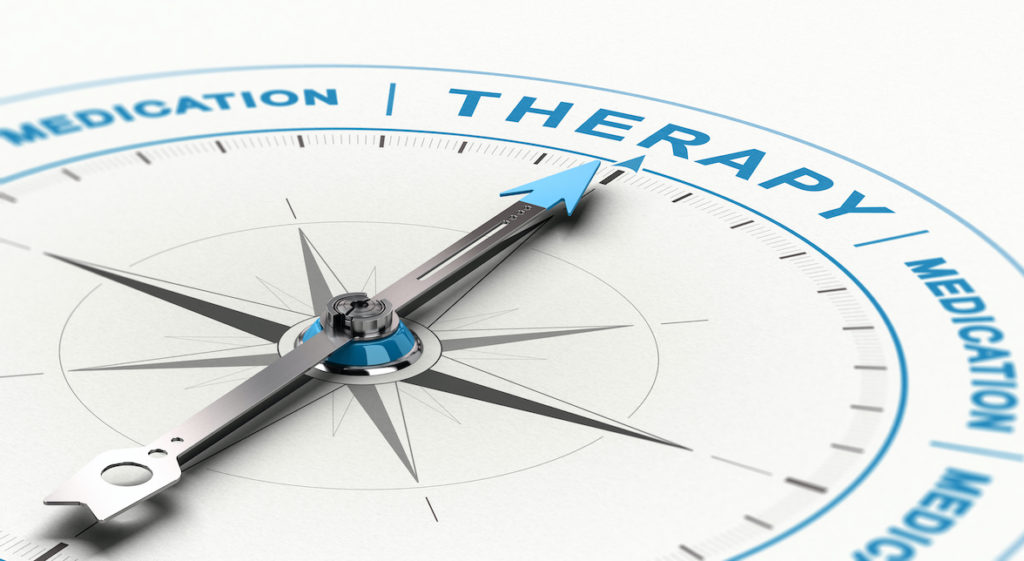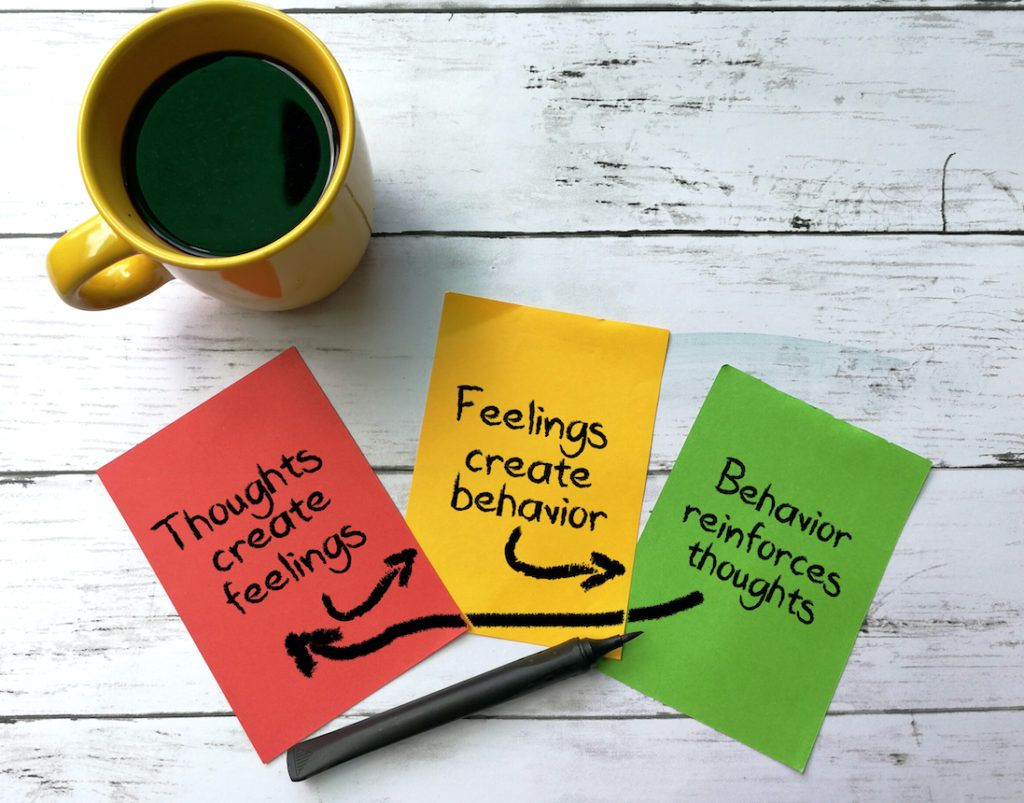
Cognitive behavioural therapy or antidepressants? In treating depression, this has become a complicated question. The elves have been tackling it for years, and we’re still figuring it out.
CBT is better than nothing, that much we know (Hayes, 2017). But how does it compare to antidepressants? Meta-analyses have tended to show little in the way of conclusive differences, and we consistently see that one size does not fit all (Dash, 2016).
But even if we can’t see much difference in outcomes, the cost implications of alternative treatment strategies could swing it. Studies have shown that CBT is cost-effective in some circumstances, such as for treatment-resistant depression (Sampson, 2014).
A recent study (Ross et al, 2019) evaluates the cost-effectiveness of CBT as first-line treatment for depression in the US, compared with second-generation antidepressants. The authors note that, while a majority of people would prefer psychotherapy to pharmacotherapy, evidence from the US suggests that less than a quarter of people receive psychotherapy.

Both CBT and antidepressants are recommended for depression, but is one more cost-effective than the other?
Methods
The authors made use of a previously developed cost-effectiveness model (Ross et al, 2008) to evaluate two treatment options: 1) CBT, or 2) second-generation antidepressants. The population of interest is people newly diagnosed with major depressive disorder.
The analysis is built on the results of a recent meta-analysis (Gartlehner et al, 2016). That study found good evidence for both CBT and antidepressants for the initial treatment of depression and found little difference between the two.
The model is used to simulate a cohort of people through states of non-response, response, relapse, and remission. Progress through these states depends on the treatment received, which people can switch up to eight times after their initial treatment.
Costs and outcomes are modelled over a five-year time horizon. The primary outcome for the analysis is net monetary benefit. This approach requires attaching a monetary value to health outcomes, for which purpose the authors estimate the impact that time in the different states of the model has on people’s quality-adjusted life years (QALYs). One QALY is assumed to be worth $100,000 in this study, which is a routine approach for studies in the US setting.
Antidepressants were assumed to cost $76 in the first three months and $28 per month thereafter, while CBT was assumed to cost $280 per month for the first three months and $140 thereafter.
Results
On average, CBT is more effective and cheaper than antidepressants. The table below shows the costs (to the health sector) and outcomes of CBT compared with antidepressants over five years:
| CBT | Antidepressants | Difference | |
| Costs | $55,400 | $57,200 | -$1,800 |
| QALYs | 3.293 | 3.238 | 0.055 |
But the differences are very small, and there is a lot of uncertainty in the findings. The 95% confidence interval for every estimate crosses zero, which means there is a reasonable chance of the opposite findings being true on average.
Both treatments are attributed a higher upfront cost, but the extra cost for CBT is much greater. Therefore, even though CBT is slightly more effective on average, the authors’ analysis shows that antidepressants are more likely to be cost-effective in the short-term (i.e. up to one year).

Even though CBT is slightly more effective on average, the authors’ analysis shows that antidepressants are more likely to be cost-effective in the short-term – but if we had to choose, CBT would come out on top.
Conclusions
The authors conclude with three key arguments:
- First, that it is reasonable for clinical recommendations, such as those of the American College of Physicians, to support the use of either CBT or antidepressants as first-line treatment.
- Second, that CBT might be more cost-effective in the long-term.
- Third, that there is a need to generate more evidence, with the relative relapse rate associated with CBT being a particularly uncertain factor.

Clinical guidelines are right to maintain flexibility, although CBT seems to be more cost-effective in the long-run.
Strengths and limitations
The model is clearly reported and easy to interpret. The main strength of this study is that the key parameters for the model, relating to the relative effectiveness of CBT and antidepressants, are derived from a meta-analysis.
I started out by saying that this study relates to a complicated question. And yet here we have a quite simple model. There are a few ways in which we might not expect it to represent reality, or to answer the real decision problem.
Part of the complication is that there aren’t just two options. It isn’t a matter of A (CBT) vs B (drugs). There may be benefit in using the two in combination or within a particular model of service delivery (Hannigan, 2016). As the authors point out, we also know that people’s preferences differ. Therefore, we should anticipate that current practice (which is to have a choice) would result in different outcomes due to a different case mix for each treatment.
The data that are fed into this model might not be able to pick-up on important differences. For instance, the model assumes that the average level of quality of life is not related to the current treatment, but only to remission or treatment response status. We’ve written before about the importance of these inputs in economic models (Sampson, 2014). While the authors are right to assert that there is uncertainty in their estimates, part of that uncertainty is due to their selection of parameters, or artificially created by their assumptions about costs.

Can simple models answer complex questions?
Implications for practice
The clinical evidence is uncertain. The cost implications are uncertain. But we can be reasonably confident that neither CBT nor second-generation antidepressants represent an outrageously expensive option.
Therefore, as the authors of this paper argue, it is surely the duty of policy-makers to enable patients and clinicians to make an informed choice about first-line treatment. Evidence shows that the majority of people would prefer psychotherapy to antidepressants, and yet uptake of CBT is still relatively low. In most contexts, this is due to a lack of available therapists.
The case for greater investment in mental health services is still one that needs to be made (Sampson, 2016). Where services are labour intensive (as in the case of CBT), it is not simply a matter of handing over cash to make it happen. Investment is needed to build capacity. While this study isn’t able to provide clear answers on the value of such an investment, it does highlight an important gap between evidence and practice.

CBT or antidepressants? Without a clear winner on average, patient preferences should come into play.
Statement of interests
None.
Links
Primary paper
Ross EL, Vijan S, Miller EM, Valenstein M, Zivin K. (2019) The Cost-Effectiveness of Cognitive Behavioral Therapy Versus Second-Generation Antidepressants for Initial Treatment of Major Depressive Disorder in the United States: A Decision Analytic Model. Ann Intern Med. 2019;171(11):785. doi:10.7326/M18-1480
Other references
Hayes, J. (2017). CBT and severity of depression. Mental Elf. Last assessed: 16 March 2020
Dash, S. (2016). One size does not fit all: divergent outcomes from CBT and antidepressants for depression. Mental Elf. Last assessed: 16 March 2020
Sampson, C. (2014). CBT in primary care is cost-effective for treatment-resistant depression. Mental Elf. Last assessed: 16 March 2020
Hannigan, B. (2016). Specialist depression service may help people with persistent depression. Mental Elf. Last assessed: 16 March 2020
Sampson, C. (2014). Health effects of depression: keeping economists’ models on track. Mental Elf. Last assessed: 16 March 2020
Samspon, C. (2016). The case for investing in anxiety and depression treatment on a global scale. Mental Elf. Last assessed: 16 March 2020
Gartlehner G, Gaynes BN, Amick HR, et al. (2016) Comparative Benefits and Harms of Antidepressant, Psychological, Complementary, and Exercise Treatments for Major Depression: An Evidence Report for a Clinical Practice Guideline From the American College of Physicians. Ann Intern Med. 2016;164(5):331-341. doi:10.7326/M15-1813
Ross EL, Zivin K, Maixner DF. (2018) Cost-effectiveness of Electroconvulsive Therapy vs Pharmacotherapy/Psychotherapy for Treatment-Resistant Depression in the United States. JAMA Psychiatry. 2018;75(7):713-722. doi:10.1001/jamapsychiatry.2018.0768
Photo credits
- Photo by Micheile Henderson on Unsplash
- Photo by Paweł Czerwiński on Unsplash
- Photo by pine watt on Unsplash
- Photo by Milo Bauman on Unsplash

Thanks for the post, Chris. Looks as if Johann Hari was too one-sided in his book.
Also relevant here are the TADS (2015) and IMPACT (2017) RCT’s which evaluate effectiveness and consider costs of treating depression.